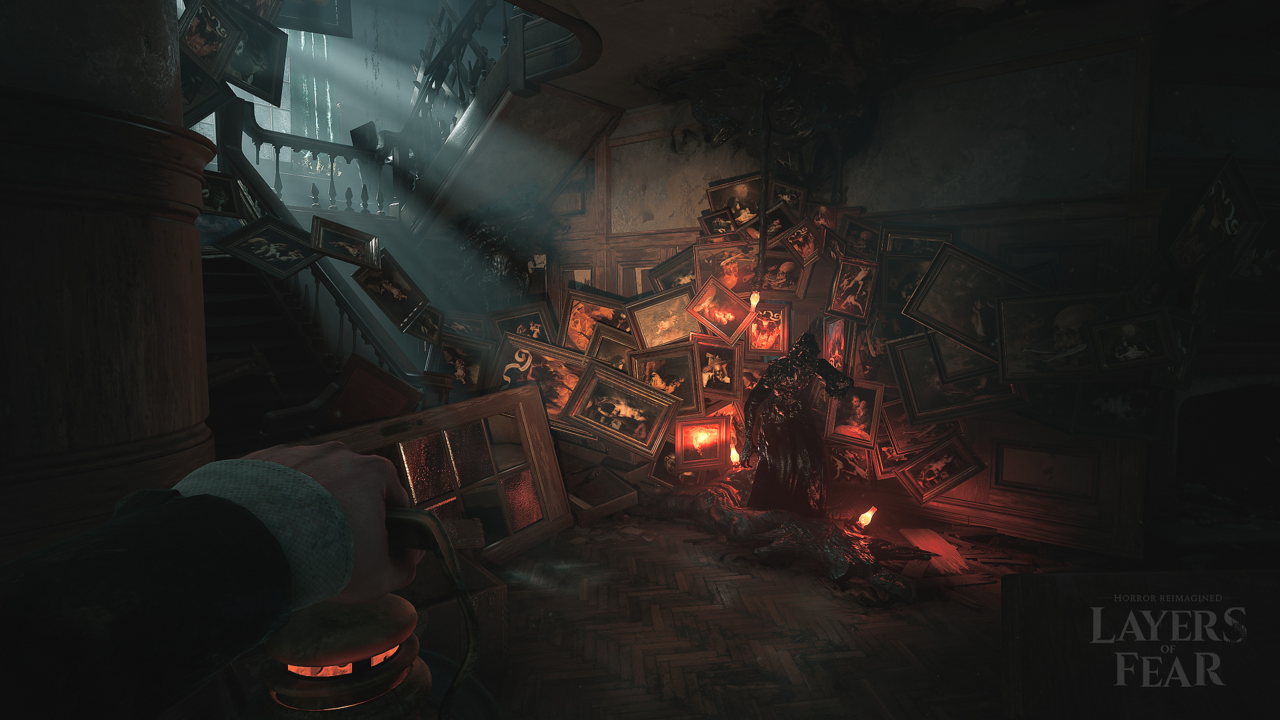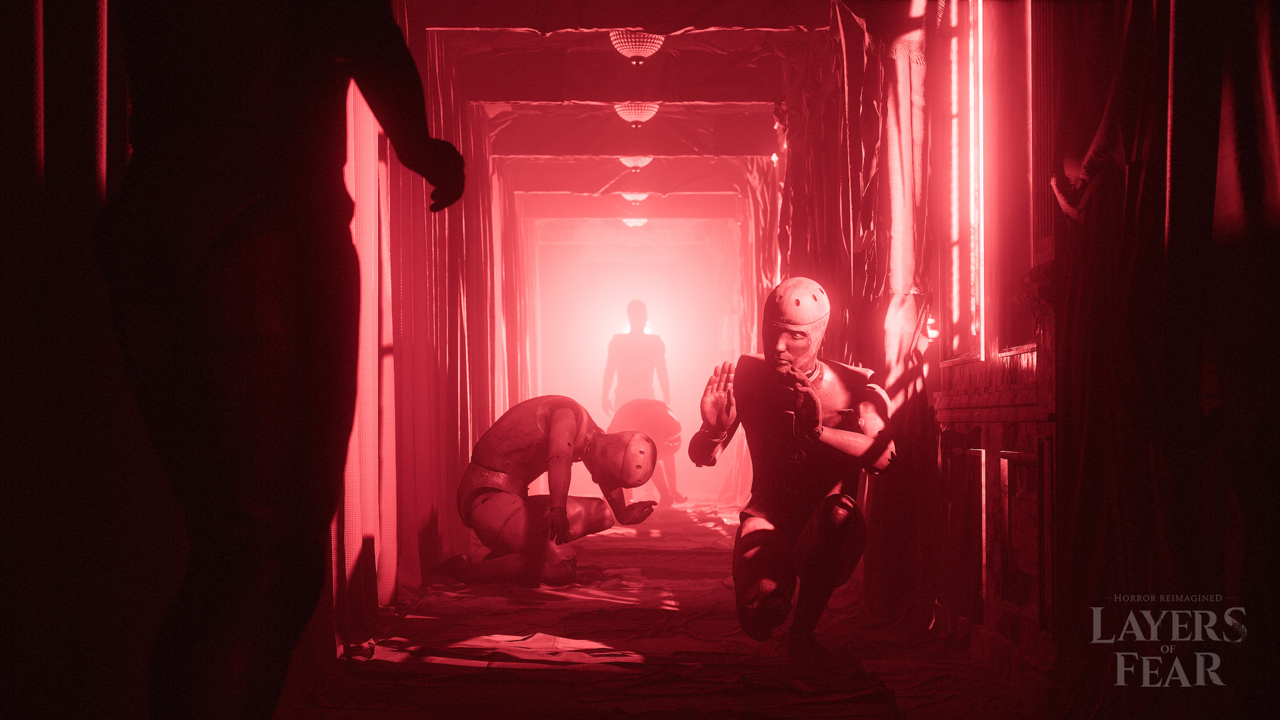Bloober Team's original Layers of Fear (2016) became an almost overnight gaming sensation when its mind-bending Steam Early Access version gave players some truly imaginative sights. The sequel continued the original's themes of tortured artists, but swapped a painter for an actor, and offered arguably even more inventive visuals. Both games were, in my opinion, fine, but nothing more. Now, reborn on Unreal Engine 5 with new content interspersed with what was there before, Layers of Fear (2023) looks to be the definitive way to experience the horror series. However, its haunts remain largely empty. The new engine makes the game a visual benchmark, but it still feels more like a haunted house at a theme park, offering the illusion of danger but never something sincerely threatening.
Perhaps the first hurdle in critiquing the series' reinvention is explaining exactly what this package offers. Layers of Fear and its sequel both return roughly 80% the same as you may have experienced them before. Some scenes have been redesigned or added--or even removed, if my memory serves me correctly. Both games receive new but ultimately shallow mechanics allowing for a few combat sections in which you'll need to blast stalking ghosts with light to stall them while you escape their maze-like settings. The first game's brief Inheritance DLC is also included, and a brand-new DLC meant to wrap the series up more neatly than before, The Final Note, makes its debut.
The best part of all of this is actually the framing narrative, The Writer's Story. Built directly into the game as you progress through its connected parts, you'll routinely jump back to a lighthouse where a writer tells the story of the game's other haunted artists: the painter, the actor, and the musician. Like those in the main games, the writer is dealing with her own hauntings, and I find the format classy and quite novel for the medium. It feels like a horror anthology, such as V/H/S, only in this case, all the individual stories ultimately share a universe.

This delivery is compelling, but it has the odd effect of making each individual piece more of a letdown, as they largely struggle to hold up on their own. Layers of Fear has always been more like an amusement park ride than a survival-horror experience, and that MO just doesn't feel conducive to generating actual tension. Even in these new versions--which try to add more possible game-over screens--moments are too scripted and enemies are basically non-existent. The novelty of entering a room, seeing something weird happen, then turning to find the environment has seamlessly changed before you is occasionally mind-melting, but never, ever scary.
The first game also feels desperate to avoid being misunderstood, to the point where its story is laid out so bare, it betrays the adage of "show, don't tell" at every turn. The Final Note DLC seeks to over-explain even more by putting you in the role of the one person you never play as in the original or its Inheritance DLC. Inheritance also winds up being mechanically frustrating due to some confusing puzzles, but its intent to show the world through the eyes of a child make it more memorable than anything the other pieces do, unless you count the new DLC's broken enemy encounters, during which the ghost chasing me get stuck halfway in the floorboards.
The highlight is certainly Layers of Fear 2, which does more with its setting and story than the rest of the series combined. Unlike the needlessly overt original, the sequel is perhaps too shrouded in metaphor at times, though it does make piecing it all together more interesting.
For those who never played the original Layers of Fear games, this reimagined package is definitely a better first experience than the old versions
While the other games all take place in endless darkness, Layers of Fear 2 is set aboard a cruise ship where a movie was to be filmed, and it's not afraid to turn the lights on at times, constantly toying with different palettes and scenery. It winds up more memorable than the original's house, which feels the same room to room, albeit with some nightmarish scenes of its own to play off of. The story is at once a twisted tale of method acting, a dark tragedy, and a nearly constant homage to horror's past, with nods to The Shining, Psycho, and more laid out like displays in a horror museum. It's all narrated by actor Tony Todd too, who makes a great fit given the tenor of his voice, particularly if you're familiar with his body of work like Candyman and Final Destination.
Still, not even Layers of Fear 2 can break free of the series' shackles. Gameplay across the series largely comes down to walking, opening doors, and seeing what weird scene awaits on the other side. Some light puzzles mix up the pacing, but the new chase sequences feel one-note, many of them even using the same dialogue lines time after time. To its credit, this new edition is built on Unreal Engine 5 and seems to utilize the new Lumen lighting technology, which makes games like Fortnite so jaw-dropping to look at. Here, the colors are naturally not as bright as Epic's cartoonish battle royale, but the lighting tech is dazzling nonetheless. I stopped in my tracks many times across the 10-12 hours it takes to finish all five experiences simply because the game looks amazing.

It's just too bad it rarely does more than that. Before, Layers of Fear offered some stunning scenes and a moody atmosphere. Now, nearly a decade later, the game somehow reinvents itself but adds very few new strengths, while its weaknesses only stand out more due to the effort that went into justifying the project in the first place. It feels like the studio heard the complaint of a lack of true threats in the games, but in seeking to polish out that blemish, just left more faults.
For those who never played the original Layers of Fear games, this reimagined package is definitely a better first experience than the old versions, simply on account of looking better and adding the neat framing narrative of The Writer's Story. But for horror enthusiasts already well-versed in the series, its MO remains as smoke and mirrors. There are no real terrors lurking in the shadows just out of reach. There is only the suggestion of some, and like the many tortured artists at the center of its saga, they are left unfulfilled.